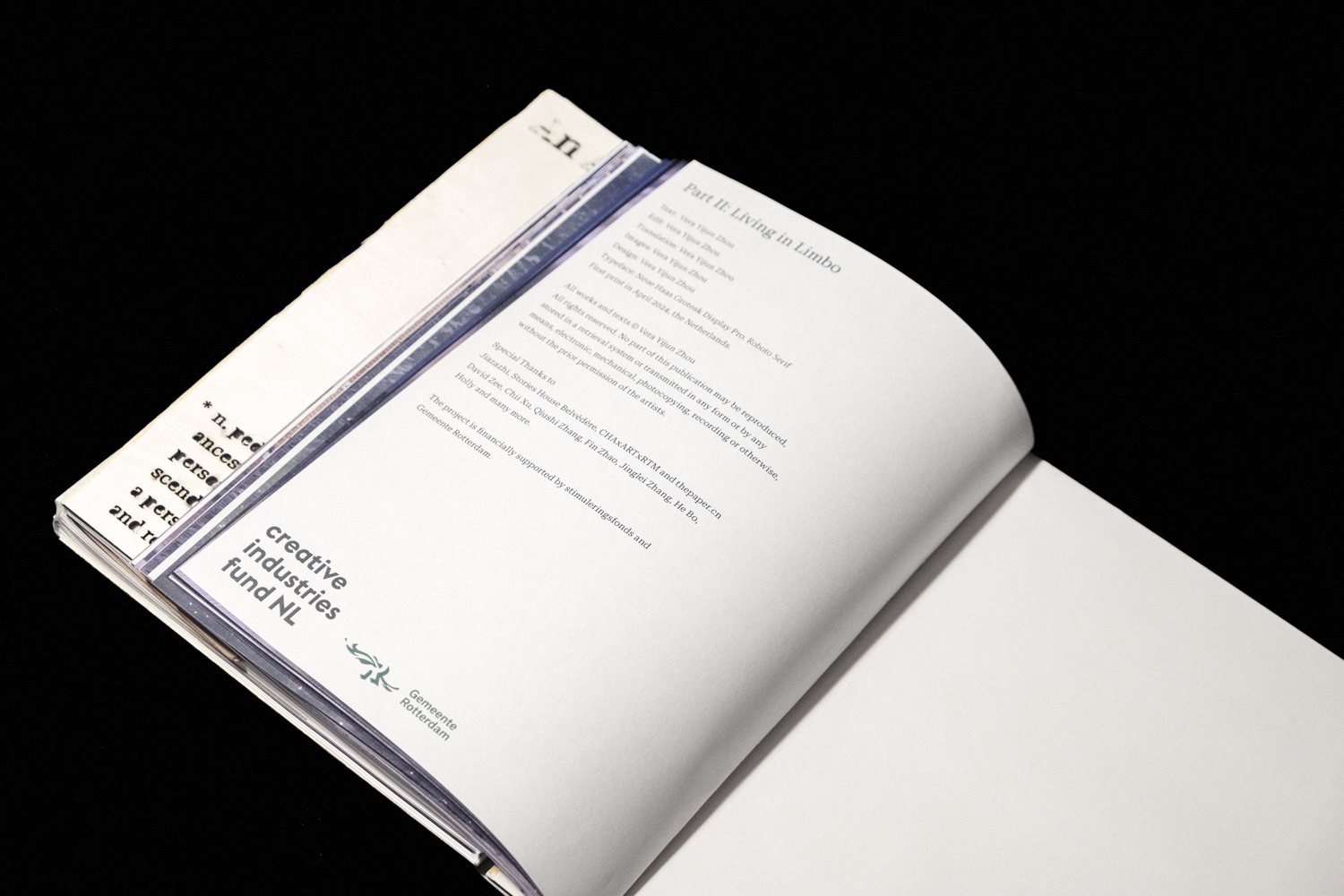2025
Living in Limbo
An interdisciplinary art project rooted in artist Vera Yijun Zhou’s research into the histories and emotional geographies of Chinese migration in the Netherlands. Centered on the Zee family’s migrantion journey from Ningbo to Rotterdam over the past century, the book interlaces archival photographs, field research, and visual interventions across three port cities between the NL and China —Rotterdam, Shanghai, and Ningbo. The photobook interrogates notions of displacement, diasporic memory, and identity in transit. By pairing historical materials with contemporary imagery, Living in Limbo becomes both a personal reckoning and a visual archive of migration—inviting viewers to reconsider how belonging is constructed across time, borders, and generations.
Part 1: An Absent Stamboom
200 pages; 45,000 words; English and Chinese.
Text by David Zee, edited by Vera Zhou, Chinese translation by Vera Zhou and Qiushi Zhang.
Archives from David Zee’s family archive. Design and photographs by Vera Zhou.
Part 2: Living in Limbo
32 pages; 1432 words; English and Chinese.
Text by Vera Zhou, translated by Vera Zhou; Design and photographs by Vera Zhou.
Cover laser cutting, CMYK print
Designed by Vera Yijun Zhou
200 pages; 45,000 words; English and Chinese.
Text by David Zee, edited by Vera Zhou, Chinese translation by Vera Zhou and Qiushi Zhang.
Archives from David Zee’s family archive. Design and photographs by Vera Zhou.
Part 2: Living in Limbo
32 pages; 1432 words; English and Chinese.
Text by Vera Zhou, translated by Vera Zhou; Design and photographs by Vera Zhou.
Cover laser cutting, CMYK print
Designed by Vera Yijun Zhou












